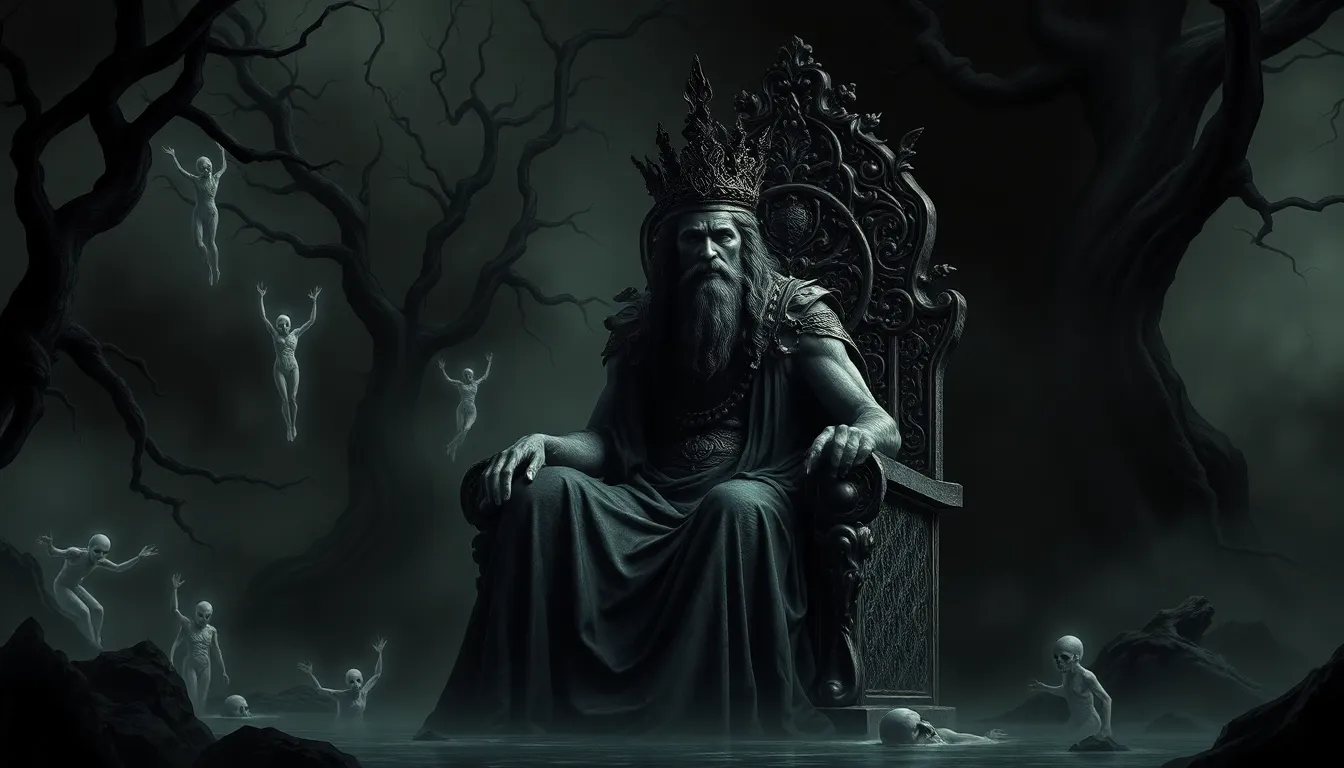Table of Contents
ToggleWhen you think of Hades, you might picture a dark, gloomy underworld filled with lost souls and ominous shadows. But hold on! This Greek god of the underworld isn’t just about doom and gloom. He’s got a reputation that’s as rich as a triple-chocolate cake—if you dare to slice into it.
Overview of Hades
Hades is known as the Greek god of the underworld and governs the realm of the dead. He oversees the souls of deceased individuals, delivering judgment and ensuring that they receive appropriate afterlife experiences. This domain includes various regions such as the Fields of Asphodel, where most souls reside, and the Elysian Fields, which hold the virtuous.
While many view Hades as solely associated with darkness, his role encompasses protection of the deceased and management of the afterlife. He collects souls but does not actively seek to harm the living. Additionally, he possesses a crucial role in the cycle of life and death, which connects all living beings.
Among Hades’ significant attributes, wealth stands out since he governs precious minerals beneath the earth. The term “Hades” also refers to his realm, highlighting the connection between the deity and his domain. Mysteries surround him; dark shadows cloak him in stories and ancient texts, yet they often overlook his balancing influence over life.
Hades is married to Persephone, the daughter of Demeter, which adds layers to his character. Their union symbolizes the changing seasons and the cycle of growth and decay. This relationship demonstrates the complexity of life and death, revealing a more nuanced view of Hades as a compassionate figure rather than purely foreboding.
In art and literature, Hades appears frequently, showcasing his connections to both myth and human mortality. His representations challenge perceptions, proving that there’s depth to his character worth acknowledging. Understanding Hades requires recognizing the balance he maintains between the living and the dead, portraying him not just as a god of death, but an essential force in the mythology of ancient Greece.
The Mythological Background


Hades stands as a prominent figure in Greek mythology, embodying the complexities of life and death. His character interweaves with various myths, revealing insights into his family and roles within the pantheon.
The Family of Hades
Hades belongs to the Olympian family, being one of three siblings. He shares lineage with Zeus and Poseidon, making them integral to Greek cosmology. Persephone, his wife, is the daughter of Demeter, linking Hades to the agricultural cycle and seasonal change. In this complex family dynamic, Hades, Zeus, and Poseidon divided the universe among themselves, each ruling different realms. While Zeus took the sky, and Poseidon became the god of the seas, Hades presided over the underworld, thus establishing his domain’s significance.
Hades in Greek Mythology
In Greek mythology, Hades is often misunderstood as a sinister force. He oversees the realm of the dead, ensuring order among the souls. His function promotes balance between life and death, marking him as a protector rather than a villain. Tales like that of Orpheus showcase his power and the complexity of his character. The story highlights how he could be swayed by love and compassion, particularly through his relationship with Persephone. Unlike common misconceptions, Hades plays an essential role in the cycle of life, symbolizing the inevitability of death as a natural process.
Key Characteristics of Hades
Hades possesses multiple distinct traits, reflecting his complex nature and essential role in mythology.
God of the Underworld
As the god of the underworld, Hades oversees the realm of the dead. He governs a vast domain that includes areas like the Fields of Asphodel, where ordinary souls reside, and the Elysian Fields, home to the virtuous. His presence ensures that the souls of the deceased receive fair treatment in their afterlife journey. Many view him as a figure of darkness, yet his role extends beyond mere despair. Hades maintains order among the souls, highlighting his importance in maintaining the balance between life and death.
Hades and Wealth
Hades often relates to wealth through his connection to precious minerals hidden beneath the earth. This aspect of his character signifies the abundance and riches associated with the underworld. Additionally, his name reflects not only his identity as a deity but also the realm he governs. Ancient texts underscore Hades’ link to both material wealth and the spiritual aspects of life after death. Consequently, he embodies a duality, intertwining prosperity with the inevitable cycle of mortality. Worshipers also recognized this relationship, seeking his favor for protection and fortune.
Cultural Representations of Hades
Hades’ character appears in various cultural expressions, showcasing his multifaceted nature.
Literature and Art
Greek literature often portrays Hades as a complex figure. In “The Iliad” and “The Odyssey,” he manifests as a guardian of the underworld, ensuring souls reach their rightful place. Numerous ancient tragedies depict his relationship with Persephone, highlighting themes of love, loss, and the cycle of nature. Art has also captured Hades, with sculptures and paintings reflecting his formidable yet misunderstood persona. Artists like Gustave Moreau represented Hades in ways that evoke both fear and fascination, emphasizing his role in the afterlife. These works contribute to a deeper understanding of Hades beyond mere darkness.
Modern Adaptations
Today, Hades continues to inspire adaptations across various media. Films like “Hercules” reimagine him as a villain, simplifying his character for entertainment purposes. In contrast, video games such as “Hades” present him as a more sympathetic figure, allowing players to explore his complexities. Literature, including Sarah Perry’s “The Essex Serpent,” integrates Hades’ themes to symbolize death and renewal. Graphic novels and comics also portray him with greater depth, often revealing his protective nature over souls. These modern interpretations maintain Hades’ relevance in contemporary culture while challenging traditional views.
Hades in Popular Culture
Hades frequently appears in forms of popular culture, often diversifying his character from traditional portrayals. Literature and art depict him as a complex deity overseeing the underworld. In ancient Greek tragedies, his relationship with Persephone highlights themes of love and loss. Characters and storytelling emphasize his role as not merely ominous but also protective.
Movies offer various interpretations of Hades. In Disney’s “Hercules,” he takes on a villainous role, showcasing his cunning personality. This representation contrasts sharply with more sympathetic portrayals in video games, such as “Hades,” where players explore his realm and experience his multifaceted nature. Such adaptations contribute to a more nuanced understanding of his character, promoting engagement with the mythos.
Graphic novels further explore his complexities, intertwining themes of mortality and power. Authors delve into how his governance of the underworld shapes the fates of souls, emphasizing his integral part in the cycle of life and death. Networks of stories also position Hades as a crucial figure that influences heroes’ journeys, adding depth to contemporary narratives.
Artistic interpretations often reveal a blend of fear and fascination. Artists like Gustave Moreau present Hades with dramatic imagery, capturing both his authority and allure. These depictions provoke interest in the dual nature of his character and deepen the connection between audiences and ancient mythology.
Adaptations continue to evolve, with creators examining Hades’ character in various contexts. Through modern retellings, he remains relevant, challenging conventional views while offering fresh perspectives on his role in the mythological framework. This ongoing exploration reinforces the cultural significance of Hades in popular narratives.




